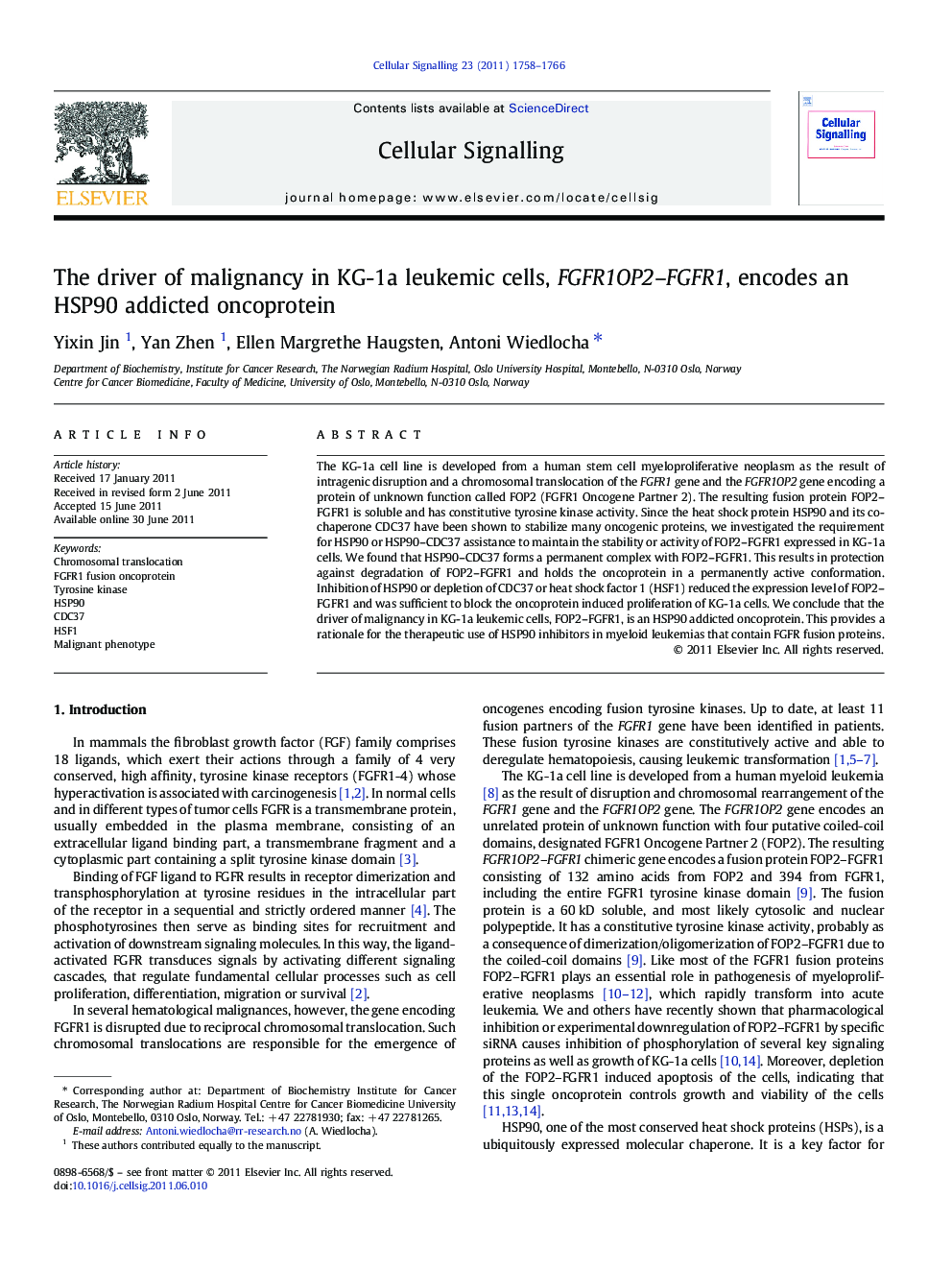| Article ID | Journal | Published Year | Pages | File Type |
|---|---|---|---|---|
| 1963642 | Cellular Signalling | 2011 | 9 Pages |
The KG-1a cell line is developed from a human stem cell myeloproliferative neoplasm as the result of intragenic disruption and a chromosomal translocation of the FGFR1 gene and the FGFR1OP2 gene encoding a protein of unknown function called FOP2 (FGFR1 Oncogene Partner 2). The resulting fusion protein FOP2–FGFR1 is soluble and has constitutive tyrosine kinase activity. Since the heat shock protein HSP90 and its co-chaperone CDC37 have been shown to stabilize many oncogenic proteins, we investigated the requirement for HSP90 or HSP90–CDC37 assistance to maintain the stability or activity of FOP2–FGFR1 expressed in KG-1a cells. We found that HSP90–CDC37 forms a permanent complex with FOP2–FGFR1. This results in protection against degradation of FOP2–FGFR1 and holds the oncoprotein in a permanently active conformation. Inhibition of HSP90 or depletion of CDC37 or heat shock factor 1 (HSF1) reduced the expression level of FOP2–FGFR1 and was sufficient to block the oncoprotein induced proliferation of KG-1a cells. We conclude that the driver of malignancy in KG-1a leukemic cells, FOP2–FGFR1, is an HSP90 addicted oncoprotein. This provides a rationale for the therapeutic use of HSP90 inhibitors in myeloid leukemias that contain FGFR fusion proteins.
